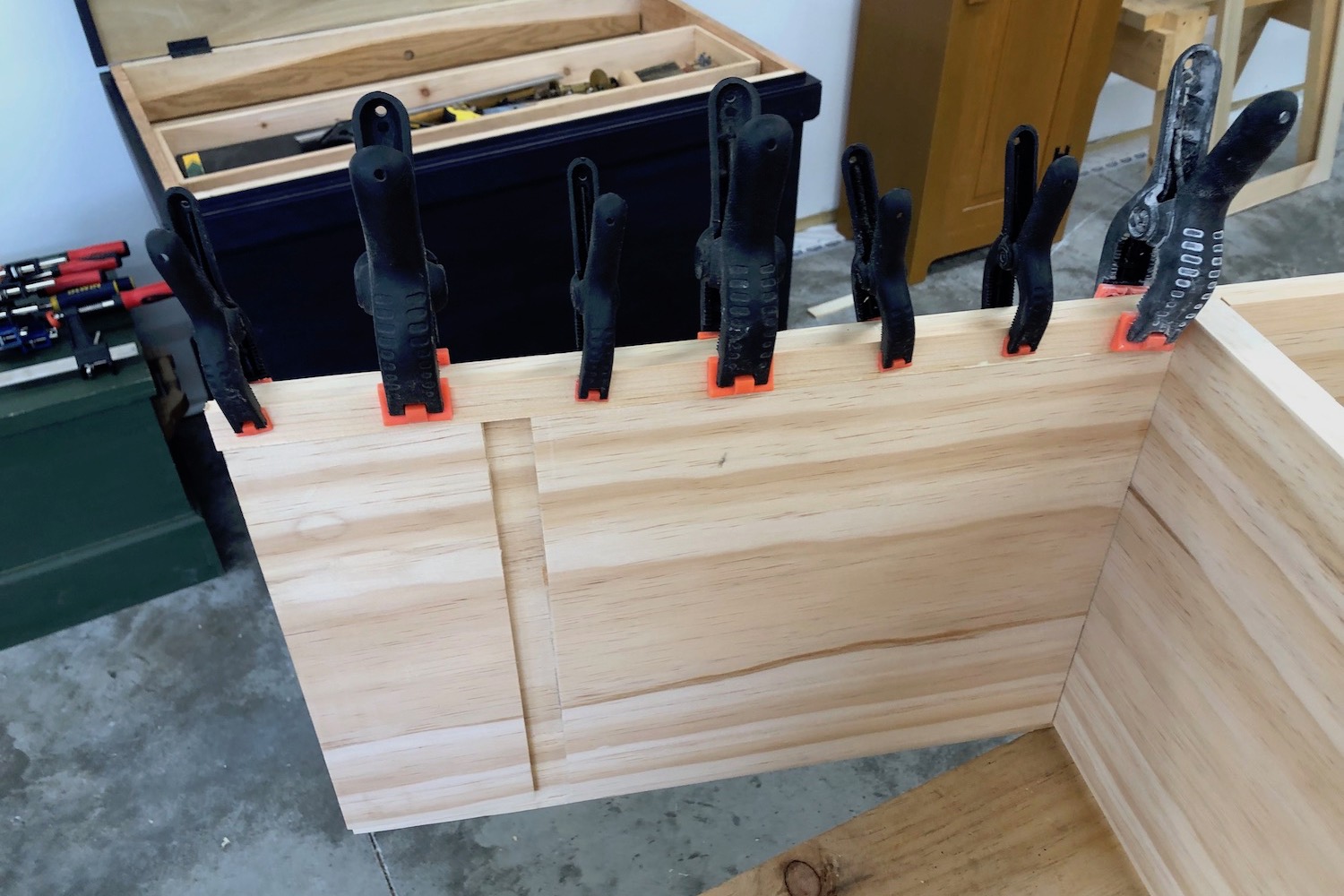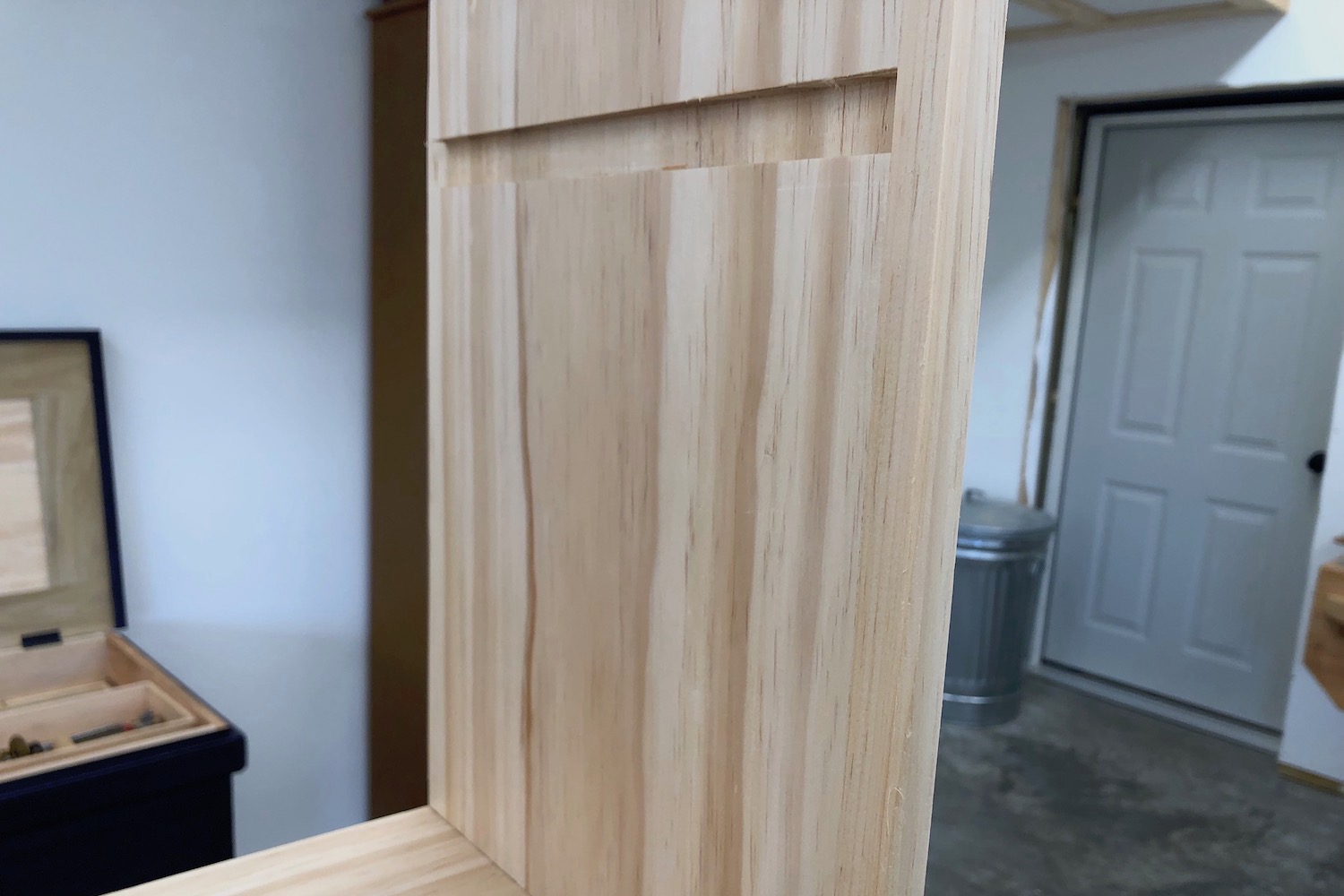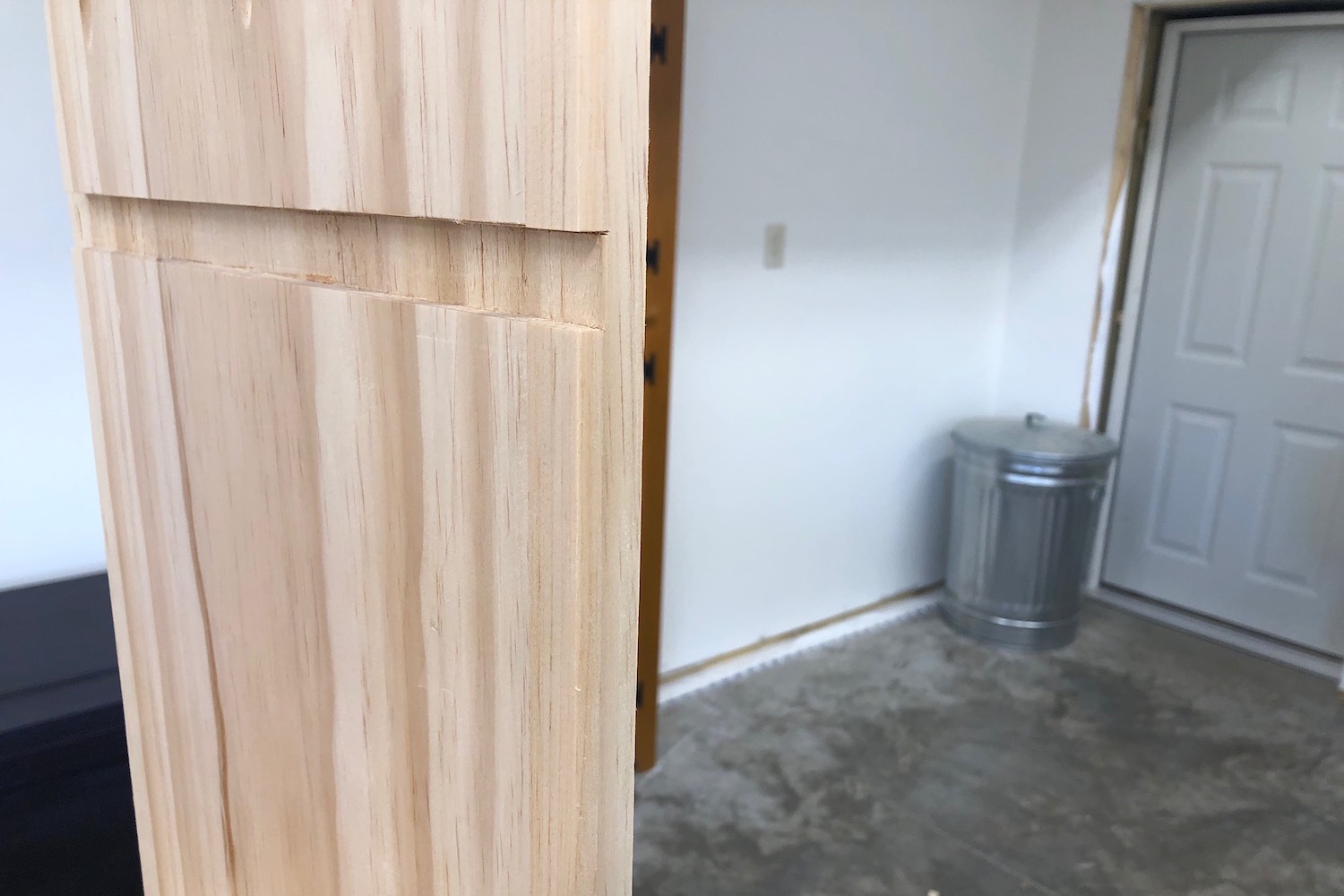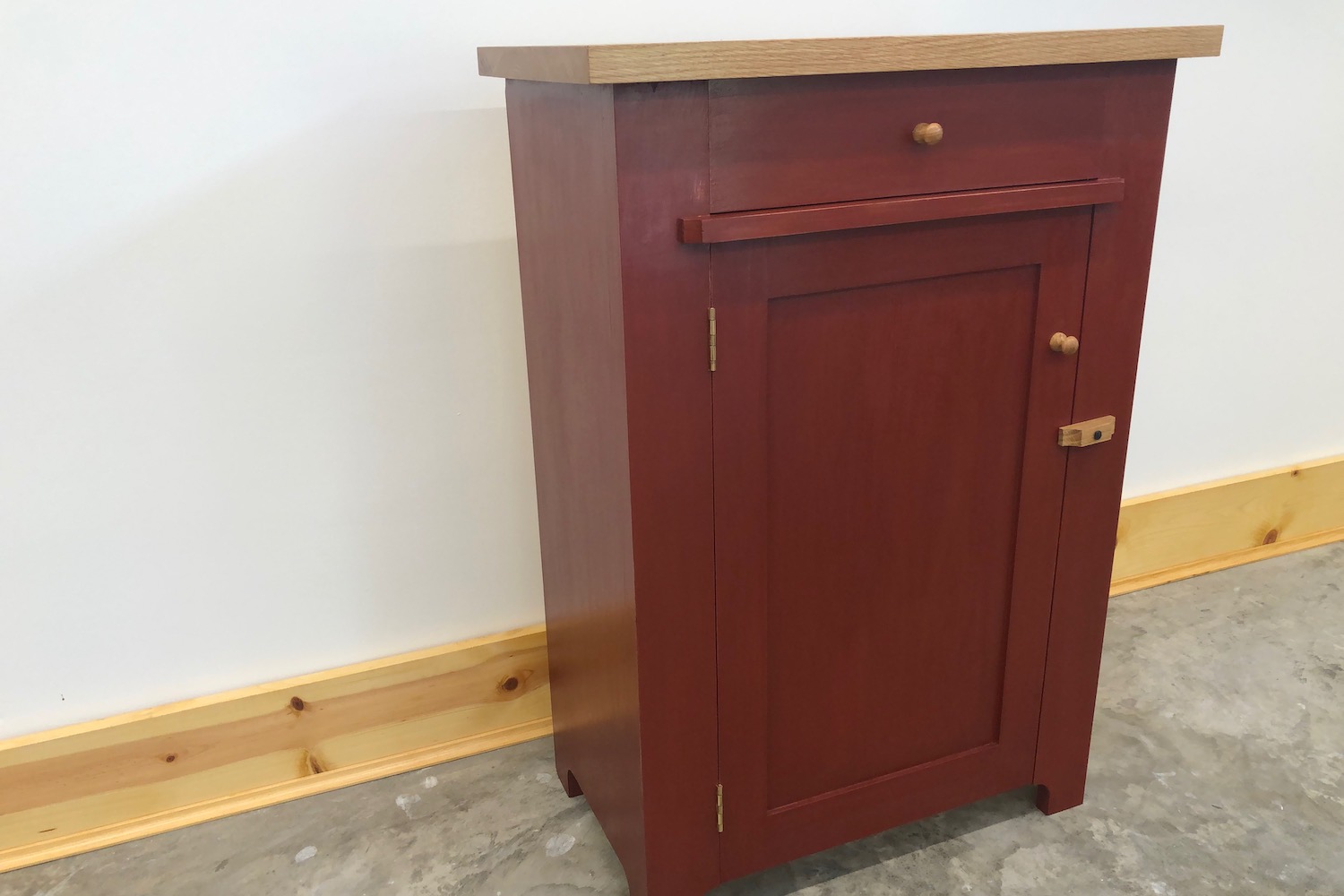
Repairing a Mis-cut Rabbet
It is often said that the true mark of a master is that they can repair and hide their mistakes in such a way that they are invisible to the observer. I tend to disagree with this cliché. In my opinion, a master doesn’t make avoidable mistakes. Therefore, as I am far from deserving of the title of master, I find that it’s important to be able to repair my mistakes in such a way as to make them mostly invisible in the finished piece.
Case in point, I recently resumed work on a project that I started during a private class that I taught in my shop back in September 2018. The piece is a simple boarded cupboard. The case joinery consists of only rabbets and dados, reinforced with nails. I had cut the dados for the fixed shelves & bottom back in September. To continue work on the piece, I had to start by planing the rabbets that would receive the case’s back boards.

After setting up my moving fillester plane for the correct rabbet width and depth, I proceeded to plane the first rabbet…on the wrong edge of the case side. It wasn’t immediately apparent to me what I had done. It was only as I was positioning the second case side to plane its rabbet that I realized my error.
Look closely at the feet in the photo above. The feet at the back of the case side are 3/4″ wider than the feet at the front. This is because the front edge will receive a face frame of 3/4″ stock, which will make the feet equal in width in the finished piece. That was the only clue to my error (note: this could have been avoiding by marking the edge that was supposed to receive the rabbet). Realizing this, I proceeded to plane the two rabbets in the correct locations.

This is the point where many people panic, or get angry and start throwing project parts across the shop. I find that when I’m faced with these situations, it’s best to stop and take a breath and reassess the situation once the initial panic or anger has passed. In most cases, a suitable solution can be found only by approaching the problem with a clear, calm head. If an aesthetically pleasing repair isn’t possible, just remember, it’s only wood, it really does grow on trees. Remaking a part from a new board is always an option, though in most cases it should probably be a last resort as many mistakes can be repaired.
In this case, the repair was quite a simple solution. I milled up a piece of pine to a hair larger than the dimensions of the rabbet. If I would have had a longer piece that matched the grain well, I would have glued in a single strip. However, I only had short offcuts left from this Radiata pine board. So I glued and nailed in the bottom and center shelves before I repaired the mis-cut rabbet. Then I glued the strips into the rabbet. Once the glue dried, I planed and scraped the repair flush to the front edge and inside face of the case side.

The top shelf of the case was only a few inches from the top edge, and the strips I had were long enough to span the dado, so I decided to leave that shelf out to simplify making the repair. However, the repair filled in the front edge of the shelf dado, so that would need to be recut.

After laying out the width and depth of the dado with a square and marking gauge, it was a simple bit of saw and chisel work to reestablish the through dado for the top shelf. Alternatively, I could have notched the top shelf around the “stopped” dado, but as the other case side did not have a stopped dado, consistency dictated that I make this one a through dado as well.

When all was said and done, the resulting repair was practically invisible. The grain match ended up quite nice as I was able to use part of the same board to mill up the patch. Were I going to leave this all exposed, no one would be the wiser that I made this mistake.
In this case, since I covered up the case side with a face frame, I could have made the repair in walnut and it still would have been invisible in the finished piece unless you were to stick your head inside of the cupboard. The repair was really only necessary to provide adequate backing for the face frame. But I like to use these opportunities as practice so that I can do an even better job in the future when the repair will be visible, because I am sure to make more mistakes in the future.

Tag:Rabbet, Repairing Mistakes

2 Comments
From where I’m standing, you look like a master to me! Great explanation as ever Bob – thank you.
Thanks Robert! But I’m far from a master at anything. I’m still learning every day.